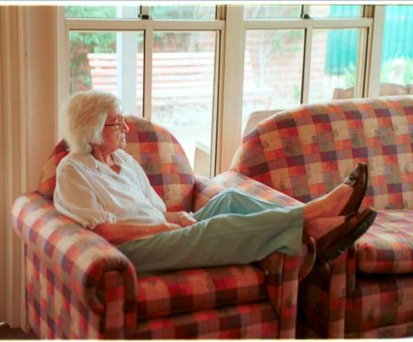New direction for better aged care homes
An Australian first study examining different models of residential aged care has found that people living in smaller home-like facilities have better quality of life and fewer hospital admissions.

Residents in these facilities had a 68% lower rate of being admitted to hospital and 73% lower chance of presenting to the emergency department.
Benefits in quality of life for the residents were achieved without an increase in the running costs of these facilities, according to the research led by Flinders University.
Data published in the Medical Journal of Australia and to be presented at the International Dementia Conference in Sydney this week, was analysed by Rehabilitation and Aged Care researchers at Flinders University in Adelaide and involved 541 permanent residents in 17 aged care facilities across four states of Australia. The study included a high proportion of people with dementia.
In 2016 there were approximately 180,000 people living in permanent residential aged care in Australia – an increase of over 10% in the last five years. The average age of a person living in residential aged care is 84 with 52% of these living with a diagnosis of dementia.
In Australia’s major cities the standard model of residential aged care has been buildings of more than 60 beds and this size is increasing. However, there is growing evidence from around the world that more home-like models provide better quality of life for aged care residents.

Dr Suzanne Dyer, first author on the study and Senior Research Fellow at Flinders University, says these models of care provide benefits for residents.
“Our research shows that residents of these home-like clustered facilities had fewer hospitalisations and also a lower chance of receiving potentially inappropriate mediations, including antipsychotics,” Dr Dyer says.
“These benefits translated into a better quality of life of the residents and this was achieved without an increase in the running costs of the facilities.
“There is a clear need for further research to explore these potential benefits, including a more comprehensive method of measuring facility running costs such as a ‘bottom-up’ analysis.”
The results of this study are part of the larger Investigating Services Provided in the Residential care Environment for Dementia in Australia (INSPIRED) study, funded through the NHMRC Cognitive Decline Partnership Centre (CDPC). The study was a major project for the CDPC and supported by aged care and consumer funding partners.
“The INSPIRED study finally provides some evidence on the effect of smaller residential care models similar to the US Green House model and it looks promising”, explains project Lead Investigator Professor Maria Crotty.
“A key was to include resident and family input in the study. Residential aged care is being used for multiple purposes so one size doesn’t fit all. A facility model for palliative care won’t work the same for people with dementia,” Professor Crotty says.
Supporting publication: mja17.00861.R2 – “Cluster models of residential aged care are associated with fewer hospitalisations and better quality of life: an Australian cross-sectional study” “Costs of potentially inappropriate medication use in residential aged care facilities” BMC Geriatrics http://rdcu.be/EwqZ.
More information: http://www.flinders.edu.au/sohs/disciplines/rehabilitation-aged-and-extendedcare/research/residential-aged-care.cfm
Additional statistics and data https://www.dementia.org.au/statistics https://www.gen-agedcaredata.gov.au/Resources/Factsheets-and-infographics




